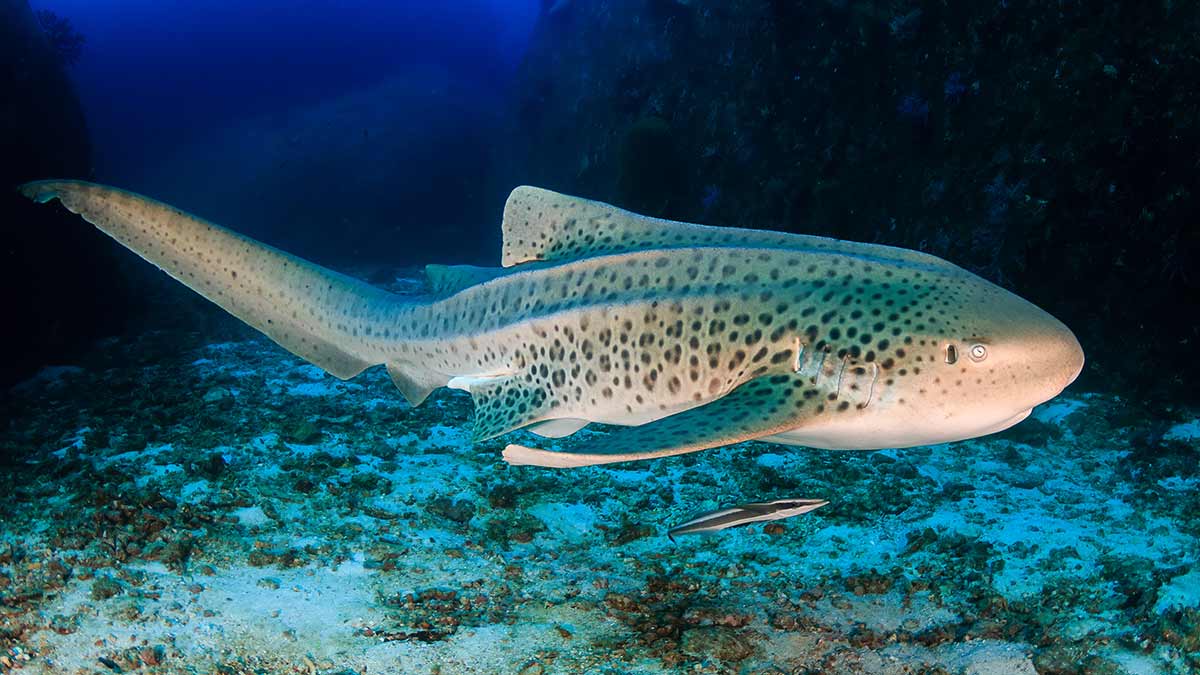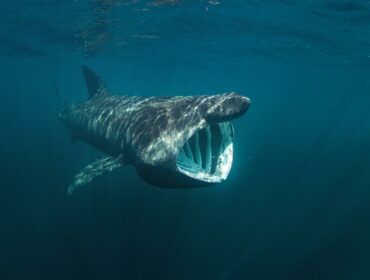In this article we are going to look at a group of sharks that are the most frequently encountered when diving, freediving, or snorkeling in the tropics across the globe: the reef shark.
We will look at some of the different species, their diet, behavior, anatomy, threats they face, as well as their role in the ecosystem and a few other interesting facts about these fascinating animals. No matter how you like to explore the underwater world there will be some useful information here for you to ponder the next time you get to share the water with reef sharks.

What is a reef shark?
Reef sharks are small- to medium-sized sharks (they range from 3 to 6 feet) and weigh in anywhere from 5 to 100 pounds. They are relatively common while diving tropical and subtropical waters. They have a slight variation in body shape but all will happily swim in close proximity to humans in the water. All these sharks display the iconic outline with pectoral and dorsal fins so instantly recognizable in the water by experienced divers and complete rookies alike.
Characteristics
The reef shark displays countershading, which means it has a white belly and a darker back. This allows these sharks to blend into a darker seabed or also be harder to pick out against brighter light at the surface. Their snout can be round or pointed and they have numerous small teeth to attack their prey.
Habitat
Reef sharks across the world live anywhere from the shallowest waters right on the beach or shoreline to steep drop offs into thousands of feet of water. Their adaptability to many different environments is one the key reasons that they have become a successful predator in the ecosystems they inhabit. They live in both tropical or subtropical water around the world. Some of these areas may be exceptions, but ocean currents bring warmer waters to the areas to allow species like this to survive.
Different species have more preferred areas they like to frequent. White tip reef sharks often hang out resting in small caves or under overhangs during the day. Meanwhile, black tip reef sharks love to patrol shallow reef flats that become accessible during high tides. Gray reef sharks or Caribbean reef sharks tend to live found in slightly deeper areas where they still have access to shallow waters teeming with small fish species or deeper drop offs where they can hang in the currents sweeping around underwater topography. Many of these species will investigate sea grass areas and mangroves looking for food sources as well.
Behavior
Many reef sharks live solitary lives but will tolerate being around other members of their own species or different species if there is enough food to avoid competition. Aggregations of baitfish are huge magnets for all reef sharks due to the sheer abundance of prey available. Cleaning stations where sharks and many other marine animals (large bony fish, turtles, rays, mantas, etc) are also places where interactions between reef sharks will occur. The removal of parasites and the cleaning of teeth and gills is vital for the ongoing health of the reef sharks. They tolerate other sharks’ presence in order to get the cleaning services.
Hierarchy is very important in shark interaction, and size is the dominating factor with the largest sharks always taking precedence over smaller ones. Certain species will always change the hierarchy due to the danger they pose to other sharks (tiger sharks or bull sharks, for example) as these species certainly have the capacity to eat reef sharks if they chose to.
Juvenile sharks will also form shivers in protected shallow areas for strength in numbers. At this stage in their lives, they are very vulnerable to predation themselves. Nursery areas are very important habitats to protect juvenile sharks and ensure healthy adult populations in the future.

Species
Although there are multiple species of shark that would fall under the umbrella of reef sharks we will focus on 4 main species in this article.
White tip reef sharks
White tip reef sharks (Triaenodon obesus) are a more slender elongated shark and have a darker shade of gray on their backs than other reef sharks. The dorsal fin and upper lobe of the tail always have small white tips at the top, hence their name. They have a narrow flat snout with visible nostrils called nares (nah-rez) and they will often be found resting on the seabed in caves or overhangs using a technique called buccal pumping to make sure that oxygenated water is passing over their gills. Primarily nocturnal feeders, these sharks use their narrower shape to wriggle into the tiniest of crevices on the reef to find their prey. This species is found in the Indo-Pacific regions only.
Black tip reef sharks
Blacktip reef sharks (Carcharinus melanopterus) are very easy to identify as they have a dorsal fin with a prominent dark tip with a pale stripe effectively underlining it, as well as a more tan-brown shade to their skin. They love to patrol shallow areas of the reef over shallow coral gardens all the way up to and even onto the beach chasing prey. They are also only found in the Indo-Pacific regions.
Gray reef & Caribbean reef sharks
Gray reef (Carcharinus amblyrhynchos) & Caribbean reef sharks (Carcharinus perezi) are very similar in their overall appearance with a light gray back and pale white belly. The gray reef shark is an Indo-Pacific species only, and as their name suggests, Caribbean reef sharks are endemic to the Caribbean. They both have a rounded snout and a chunkier appearance than the previous two species. Favoring deeper drop offs which allow them to utilize their hydrodynamic shape to gently rest in currents, they will also happily follow any indications of food into shallower waters.
Diet
All of these species can be described as piscivorous (fish eaters) but will also eat cephalopods (octopus, squid, and cuttlefish), crustaceans and even turtle hatchlings. They will also happily scavenge any food source that they can find, including scraps from larger shark’s meals or dead or dying animals.
They also use their intelligence to learn new feeding opportunities. Reef sharks are highly adaptable and learn to use situations to their advantage. For example, if fishing boats are returning to a dock at the same time every day, sharks will begin to show up on time knowing that they will get a free and easy meal. The sound of a fishing line cutting through the water is also a sure-fire sign that a meal is easier to apprehend. As such, reef sharks will often frequent areas where people like to fish.
Life span
Reef sharks are fairly long lived animals (12 to 20+ years) and take a while to reach sexual maturity (4 to 5 years) so they are very vulnerable to overfishing.
All the reef shark species we mentioned earlier in the article can be described as viviparous which means that they give birth to live young as perfect miniature replicas of their parents. These offspring are nourished in the mother’s womb via the placenta. Fertilization is internal and the male reef sharks use paired sexual organs called claspers to impregnate the females. Female reef sharks often have scars on their gills and pectoral fins where males have bitten down on them to be able to line their bodies up to mate. Their tough skin saves them from suffering serious damage during this process.
Female reef sharks will typically find sheltered shallow areas such as mangroves or seagrass beds to give birth, typically in litters of 5 to 15 pups depending on the species, size, and health of the female. These areas have shelter for their newborn young as well as lots of small fish for them to prey upon as they learn to hunt and survive on their own.
Predators
Reef sharks have a few predators that they need to be wary of in the oceans but some are a threat to them at different stages in their life. Like most animals, juveniles are always easy targets to predatory animals and this is also the case when most reef sharks become prey themselves. Sea eagles are huge birds with wingspans of 6 to 8 feet, and will target small reef sharks without hesitation. Barracuda, when they are large enough, are ferocious and will attack prey they deem suitable — young reef sharks will enter their menu. Large groupers and snappers, with their cavernous mouths and sharp teeth, are also capable of taking small reef sharks if the opportunity arises.
At all stages of their life cycles, there are some predators that remain a threat. Large bull sharks (Carcharinus leucas) and tiger sharks (Galeocerdo cuvier) are powerful animals and apex predators in the ecosystems they inhabit. They are capable of taking down adult reef sharks with ease. Of course, the number one predator for reef sharks are humans, and specifically the shark fin industry, ghost nets, and targeted fishing practices killing many reef sharks every year.
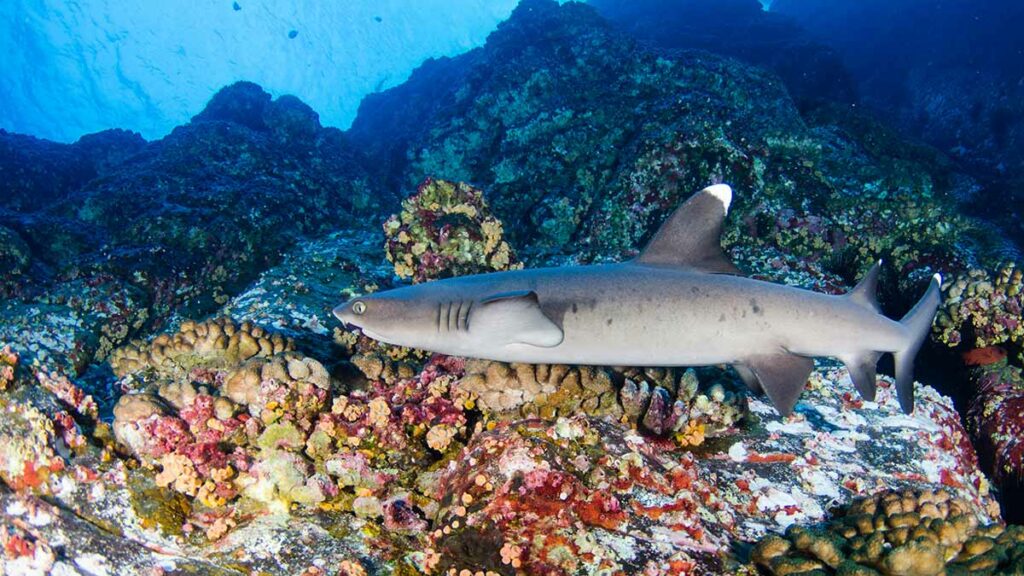
The Role of Reef Sharks in the Coral Reef Ecosystem
Reef sharks are apex predators in their environments, meaning they are at the top of the food chain in those locations. They play a vital role in the balance and health of the entire trophic pyramid they are part of. In a phenomenon called “top-down control,” the large predators at the top of the food chain remove weak, diseased, injured, and less aware animals as food. Because of this, the populations of prey and the balance in the trophic level they inhabit is maintained. This allows ecosystems to be stable and effective over long periods of time.
Conservation Concerns for Reef Sharks
Overfishing is the repeated removal of an amount of an individual species that will cause stock decline or collapse. Overfishing will have a significant impact on any species subjected to that kind of pressure on its population. However, a reef shark’s biology and reproductive habits means they are particularly susceptible to the dangers of this man-made situation.
Reef sharks reach sexual maturity at around 4 to 5 years old which could be as much as 25 to 50% of their entire life cycle. The capture of reef sharks before they have had a chance to breed can be disastrous for local populations, since there wouldn’t be any animals replenishing the stock numbers to maintain a balanced population. When specifically targeted, they are quite an easy group of animals to catch, but without due care and management, the stock can fall very quickly.
Females have relatively small litters of 5 to 15 pups, depending on their species, size, and health. Not all of those young sharks will survive due to predation and natural mortality, so the rate of replenishment in sharks is lower than in many species. This also adds to their overall vulnerability to overfishing in their environment.
Overfishing can also impact the sharks indirectly by reducing the numbers of their available prey in their habitat. If there is not enough food to support a healthy population of reef sharks then of course in turn the numbers of apex predators will also decrease.
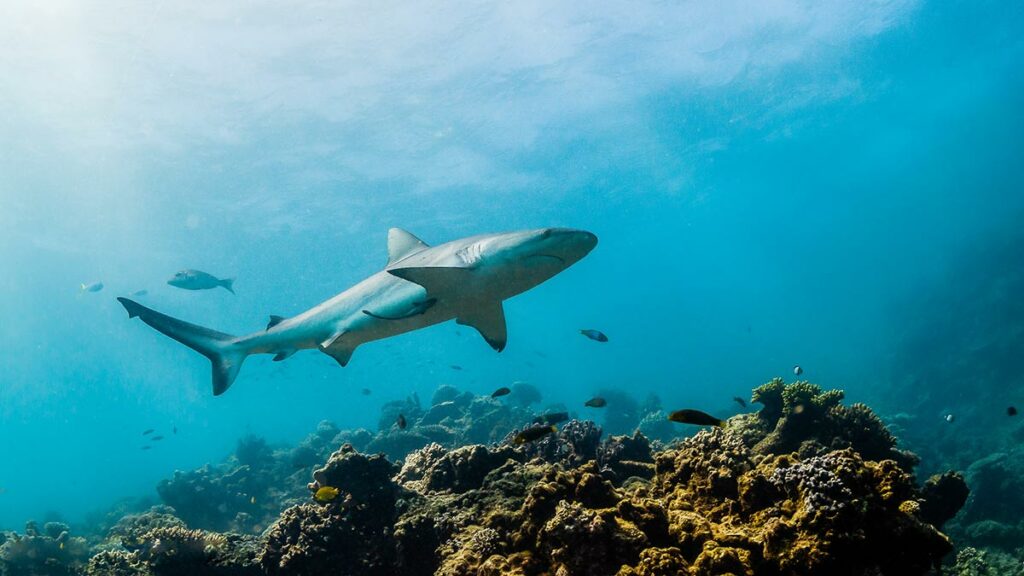
Diving with Reef Sharks: Tips and Guidelines
Here are a few tips for diving or snorkeling with reef sharks to ensure you have a safe and fun interaction in the water.
Stay Calm
Sharks are often curious creatures and will make close passes towards divers to check them out, especially in locations where they are not used to seeing people. The first thing to do when you see a shark is to stay calm and be confident.
Master Your Buoyancy Control
It’s important to follow basic good habits as a diver or dive group when diving in places with reef sharks. Divers who exhibit good buoyancy control with their equipment neatly stowed have less chance of attracting sharks than divers who ascend or descend erratically and use their hands to scull.
Check Your Area
If the last diver or snorkeler in a group “checks their six” (looks behind them), any sharks approaching from behind will not startle the group. The resulting surprised reactions from the divers will also not startle the shark.
Stick With Your Buddies
Make sure you remain as a group throughout your dive. Being strung out along the reef with large distances between buddy pairs is not ideal as sharks instinctively approach animals isolated from a larger group. Carrying a carabiner or some other noise making device is also very useful to gain everyone’s attention if needed.
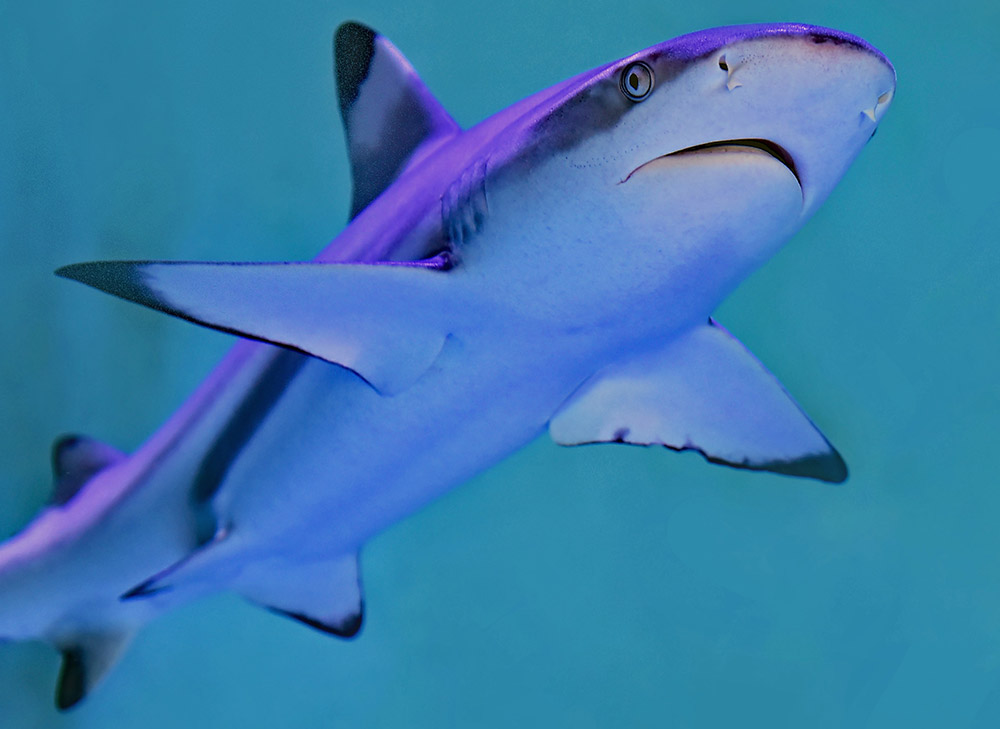
Myths and Misconceptions about Reef Sharks
Reef sharks have many myths around them, mainly concerning their behavior towards humans in the water. The common misconception is that sharks will attack anything that comes near them, which is certainly not true. Reef sharks are intelligent animals and cautious when it comes to approaching a larger animal, as humans almost always are in respect to these creatures. Typically reef sharks will stay clear of humans so seen as a slice of luck or ocean fortune if you can share the water with these animals for any length of time.
All reef sharks have the capacity to do damage to a human as they have sharp teeth and are very strong in their physical makeup. However, reef sharks do not view humans as a prey item.
Reef Sharks: Frequently Asked Questions
It is safe to swim with reef sharks if you maintain a calm and composed manner in the water. Being aware of any behavioral changes in the animals (pec fins starting to point toward the bottom, erratic swimming in speed or movement patterns) can let you know that it is a good idea to get out of the water or keep moving along the reef.
Reef sharks are not aggressive towards humans in normal circumstances. Things that may change this are activities like chumming and spearfishing as they both present feeding opportunities to the animals and change the dynamic of the situation.
If you see a reef shark simply stay calm, be still, and observe the animal going about its daily life.
It is not recommended to ever touch any marine life but especially not animals with the capacity to do harm.
Conclusion
Hopefully in this article you have discovered some new information about reef sharks that will help you to make choices on your vacation activities or diving exploits in the future. They are a joy to see in a healthy ocean and are well worth seeking out in the water for good ocean memories.



